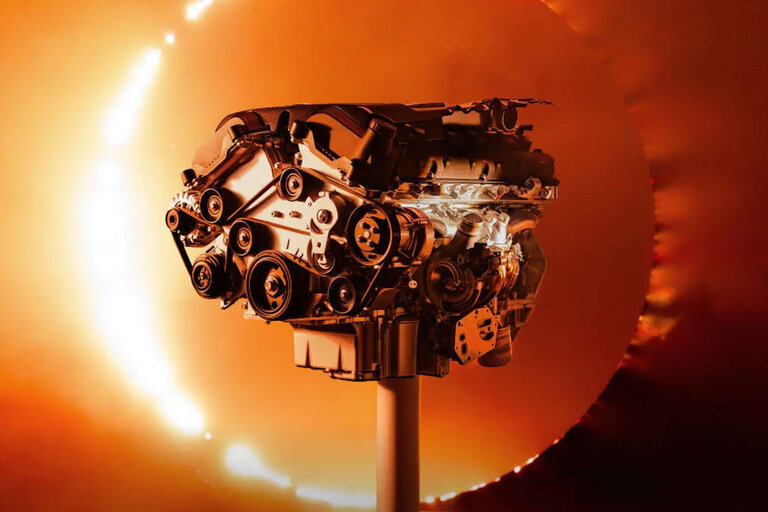
Illustration by Clint FordCar and Driver
From the May 2021 issue of Car and Driver.
Looking at Maserati‘s forthcoming twin-turbo 3.0-liter V-6, you wouldn’t know the Italian automaker has been out of the engine-making game for more than 20 years. Set to debut in the MC20 supercar, the Nettuno (Italian for Neptune, a nod to the company’s trident logo) vaults Maserati to the leading edge of internal-combustion technology just as exotic brands are getting serious about downsizing their V-8s. Using a derivative of prechamber ignition, which is common in Formula 1, engineers have squeezed a specific power output of 207.6 horses per liter from the V-6. That makes the Nettuno more power-dense than any current McLaren, Ferrari, Lamborghini, or Porsche engine.
Prechamber ignition systems work by sparking a relatively small amount of fuel and air in a tiny cavity at the top of each cylinder. As the flames escape that chamber into the cylinder via multiple jets, they initiate very rapid primary combustion. Prechamber ignition isn’t new—Honda used it in the 1970s to pass emission standards without a catalytic converter, and Mercedes introduced it to Formula 1 in 2014—but pairing it with two turbos and port and direct injection in a production engine certainly is. Prechamber ignition burns the air-fuel mixture faster than conventional spark ignition, allowing for a high compression ratio (11.0:1 in this case) to the benefit of efficiency and performance while keeping engine knock at bay.
At full tilt, with the turbos forcing 29.0 psi of boost down the six’s intake, the Nettuno makes 621 horsepower at 7500 rpm and 538 pound-feet of torque between 3000 and 5500 rpm. The company isn’t talking about fuel economy yet, but the displacement alone should put the Nettuno at an advantage over larger V-8s with comparable output. Once we drive the MC20, we’ll know for sure if Maserati’s new engine can hold a spear to the competition.
How Prechamber Ignition Work
1. Air and fuel passively fill the prechamber during the compression stroke.
2. When the prechamber spark plug fires, that fuel ignites and shoots through small orifices in the prechamber wall. This spreads out the flame so it hits and ignites the air-fuel mixture in the cylinder at several points simultaneously. Doing so generates a very efficient burn in a short amount of time—30 percent quicker than with traditional spark ignition, Maserati says.
3. When prechamber ignition isn’t needed (such as in low-load situations) or would cause instability and undesirable noise, a secondary spark plug in the main combustion chamber initiates ignition instead.
This content is created and maintained by a third party, and imported onto this page to help users provide their email addresses. You may be able to find more information about this and similar content at piano.io
Source link






